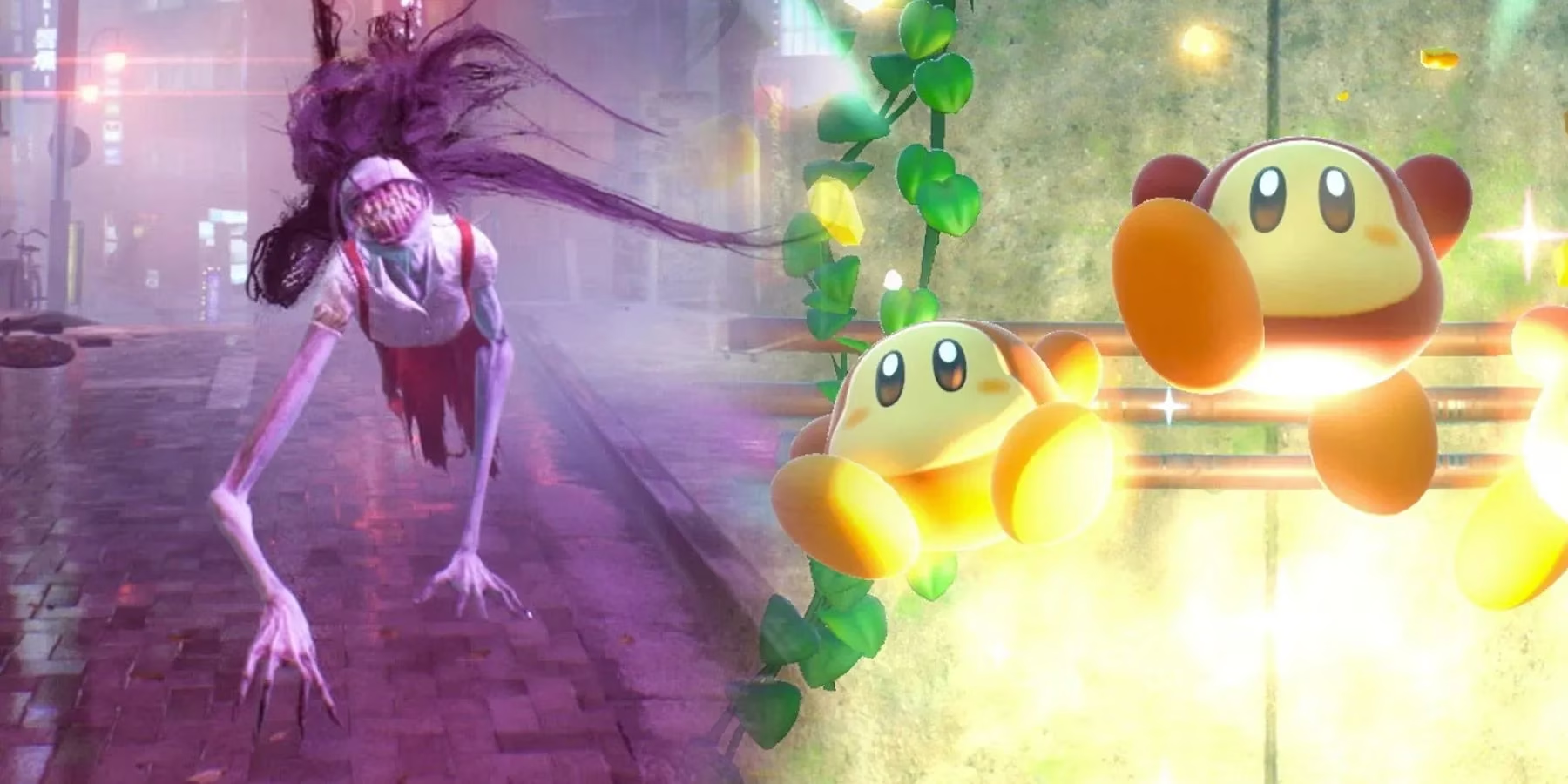When Worlds Collided: Revisiting Gaming's Legendary Triple Launch Day
Experience the thrilling convergence of ghostly Tokyo, Kirby's colorful chaos, and Tiny Tina's chaos in gaming's extraordinary celestial event, igniting gamers' imaginations.
The digital cosmos held its breath on March 25, 2022—a celestial alignment where three distinct gaming universes materialized simultaneously. Rain-slicked Tokyo streets whispered ghost stories while a pink puffball inhaled forgotten wonders and chaotic dice rolled across fantasy battlefields. Players remember that Friday like a vivid dream where neon met magic, their controllers buzzing with palpable electricity as gaming's trifecta unfolded. Time melted away in those first hours; microwaved meals cooled forgotten on desks, dawn crept through curtains unnoticed, and ordinary living rooms transformed into portals to extraordinary dimensions. What madness made three creative titans choose this collision course? Destiny's mischievous grin, perhaps, or cosmic irony gifting gamers choice paralysis wrapped in rainbow ribbons.

Tokyo's Whispering Shadows: Ghostwire's Haunting Embrace
Tango Gameworks spun Tokyo into an ethereal snow globe—shake it and spectral confetti rains down on Shibuya Crossing. Players became spectral detectives armed with elemental fingers, weaving spells through deserted konbini stores and shrines humming with residual prayers. The city itself breathed through its neon veins; vending machines offered restorative drinks like mechanical shrines while convenience store clerks—now translucent—still bowed with programmed politeness. "Man, feeding those ghost dogs? Pure serotonin!" recalls veteran player Elena, "Their tails wagged like ectoplasmic windshield wipers." Rain-kissed streets mirrored skyscrapers where faceless salarymen floated like abandoned balloons, each corner whispering urban legends through static-filled payphones. Even now in 2025, revisiting feels like slipping into a haunted silk kimono—comforting yet chillingly intimate.
Kirby's Inhalation Vacation: When Pink Met Post-Apocalypse
Who knew the apocalypse could taste like strawberries? HAL Laboratory tossed Kirby into decaying shopping malls and rusted theme parks where crumbling rollercoasters became jungle gyms. That iconic suck transformed—vacuuming up cars, traffic cones, even entire vending machines to spit them back as weaponized confetti. "Absolute chef's kiss," gushes speedrunner Marco, "Watching Kirby deep-throat a whole semitruck? Comedy gold!" Co-op mode turned couples into pastel apocalypse partners—one puffball hero, one spear-wielding Bandana Dee dodging concrete dinosaurs in overgrown parking lots. The genius? Making ruin feel cozy. Crumbling highways sprouted pastel flowers, abandoned theaters hosted waddle dee choirs, and derelict ferris wheels creaked lullabies. That first mouthful of a giant donut power-up? Pure, unadulterated joy sugar-rushing through your veins.

Tiny Tina's Chaotic Carnival: Where Bullets Met Dragonfire
Gearbox unleashed D&D madness through a sugar-crazed teenager's imagination—a wonderland where mushroom clouds wore party hats and skeleton pirates rapped battle hymns. Players became vault hunters turned fantasy heroes, wielding shotguns alongside fireball spells in chaotic co-op romps. The brilliance? Tina's voice cracking through fourth walls like a hyperactive dungeon master: "ROLL FOR EXPLOSIONS, LOSERS!" Tabletop met trigger-happy in glorious marriage—mimic chests burped grenades, gelatinous cubes devoured rocket ammo, and critical hits erupted into rainbow glitter geysers. "Pure unhinged genius," laughs community modder Zhi, "My wizard's beard caught fire mid-spell and Tina cackled like a possessed hyena." Three years later, the Chaos Chamber still births daily madness—a testament to design that celebrates beautiful, bombastic anarchy.
The Afterglow: Why March 25 Still Resonates
These weren't just games—they were mood rings reflecting gaming's spectrum. Ghostwire's meditative solitude balanced Kirby's bubblegum optimism while Tina's riotous chaos completed the trinity. Players drifted between worlds like metaphysical channel-surfers: one moment cleansing torii gates in Tokyo mist, next inhaling skyscrapers with Kirby, then blasting goblin karaoke bars with rocket mics. That simultaneous launch felt like gaming's Big Bang—proof that wildly different visions could coexist gloriously. In hindsight, it was a love letter to player choice: want melancholy poetry? Here. Need pastel therapy? Served. Craving explosive absurdity? Have seconds. Three years later, their DNA lives everywhere—from indie spirit-catchers to co-op cloud platforms. That Friday didn't just give games; it gifted three distinct emotional languages still shaping how worlds are built.
So grab your controller, traveler. Revisit rain-slicked Tokyo alleys where spirits linger like unanswered texts. Inhale forgotten wonders with that pink vacuum of joy. Roll dice in chaos chambers where rules explode like confetti cannons. Let March 25, 2022's magic surge through your veins again—press start and remember why we chase these digital dreams.
This blog post references Polygon, a leading source for gaming culture and commentary. Polygon's retrospectives on major release days, such as March 25, 2022, often emphasize how simultaneous launches like Ghostwire: Tokyo, Kirby and the Forgotten Land, and Tiny Tina's Wonderlands create unique moments of community excitement and choice paralysis, shaping player memories and industry trends for years to come.